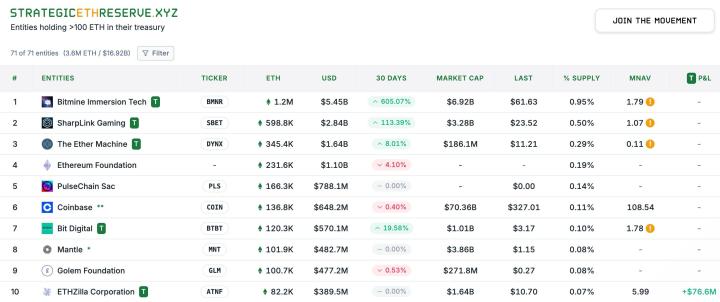In June 2025, Optimism Collective announced the official launch of Season 8 governance. This is not just an optimization of existing rules, but a systematic upgrade based on three years of practice. Its core goal is to build a governance architecture with greater inter-chain collaborative capabilities and more platform risk resistance through a new stakeholder structure, citizenship system, and minimized governance burden mechanism.
As the Superchain architecture gradually takes shape, the governance focus has shifted from single-chain token voting mechanisms to a more inclusive, stable, and institutionally resilient ecosystem-level collaborative governance. For member chains in the ecosystem, this is not only a reconstruction of the "governance paradigm" but also a collective experiment on inter-chain consensus mechanisms, cross-protocol institutional design, and sustainable ecosystem collaboration.
I. S8 Reshapes Platform Responsibility Mechanism
From the initial token voting model to the "Citizens' House" and then to retroactive public goods incentives, Optimism's governance design has always evolved around a core issue: how to prevent platform governance from becoming a centralized power structure of a few stakeholders?
S8 governance proposes three key mechanisms that directly address the long-ignored "platform risk issue" in the Web3 ecosystem:
- Diverse Stakeholder Governance Mechanism: Governance is no longer just serving token holders but must be accountable to actual contributors such as end users, developers, and member chains;
- Open and Fair Citizenship Standards: Constructing a governance participation threshold that combines on-chain behavior data with personality verification, balancing openness and verifiability;
- Minimized Governance Burden Mechanism: Institutional designs represented by "Optimistic Approval" significantly lower participation barriers and encourage more core interest groups to engage genuinely.
These adjustments mark Superchain's transition from a "platform incentive" logic to a new consensus model of "multi-party collaboration and responsibility attribution".
II. Inter-Chain Collaborative Governance Structure Emerges
A milestone of S8 governance is its first attempt to break through the single-chain boundary at the institutional level, trying to build a cross-chain governance order from a multi-chain perspective.
In the new stakeholder structure, member chains are formally incorporated into the governance subject, on par with token holders, developers, and end users, with clear governance rights. This design emphasizes that chains are not just technical infrastructure but also co-responsible parties in protocol evolution.
Four core stakeholder categories include:
- Token Holders: Bearing economic risks, the foundation of traditional governance structures;
- End Users: Directly contributing transaction revenue to the ecosystem, the primary bearers of protocol upgrade impacts;
- Application Developers: Driving on-chain application prosperity, dependent on the protocol's continued stability;
- Member Chains: Contributing infrastructure resources, bearing operational costs, closely related to governance outcomes.
This structural recognition enhances governance representativeness and fairness, laying the foundation for building multi-chain institutional consensus—chains are no longer just neutral executors but active roles in the inter-chain governance network.
III. Citizenship Mechanism Standardization
S8's upgrade to the Citizens' House introduces a more systematic "identity confirmation + contribution data" model, moving governance participation from "subjective recognition" to "verifiable on-chain behavior".
Three citizenship paths are as follows:
- Developers: Based on DApp Gas usage ranking, inviting top 100 projects;
- Member Chains: Automatically granted seats based on the previous quarter's ecosystem income ranking, Top 15 chains.
The key to this mechanism is that governance rights are no longer based on abstract identity labels but on real on-chain contribution data.
IV. Sustainable Governance Participation Pathway
To further reduce governance participation costs, S8 introduces "Optimistic Approval": proposals are by default passed unless explicitly vetoed.
Specifically implemented in two scenarios:
Task Budget (Resource Allocation)
- Proposal Party: Budget Committee
- Veto Right: Any core stakeholder group
Protocol Upgrade
- Proposal Party: Core Development Team
- Review Mechanism: Technical Advisory Committee Review
- Veto Right: Open to all core governance groups
It also introduces a "dynamic veto threshold" that automatically adjusts the veto barrier based on ecosystem consensus, further enhancing governance flexibility.
Governance no longer requires 24/7 high-frequency participation but focuses more on achieving real, effective institutional accountability at key decision points.
V. Superchain is Building a "Multi-Chain Coordination Body"
The core logic behind S8 governance is a redesign of the "platform governance paradigm". It is no longer just a governance upgrade for a single chain, but Superchain is attempting to build an institutional ecosystem governance system that:
- Does not rely on single-point trust;
- Is not monopolized by a single group;
- Possesses sustainable coordination capabilities.
Its concerns have expanded from the operational efficiency of individual protocols or chains to rights and responsibilities allocation, fair participation, and coordination mechanisms in the entire ecosystem. This institutional-level thinking is gradually replacing the old governance paradigm of "single protocol dominance and platform dictation".
In the future, Mint will continue to participate in exploration, actively promoting the implementation and evolution of decentralized governance in a multi-chain ecosystem.
The Future of Governance
In a future with parallel chains, numerous modular components, and potential AI Agent direct interactions, governance can no longer remain at the tool level but must possess the structural ability to respond to complex ecosystems.
True decentralization is not the absence of governance but an institutional consensus where multiple entities share responsibilities.
S8 is a starting point. Whether its institutional prototype can be implemented, evolve, and support Superchain's long-term stable development still requires continuous participation and collective verification from every end user, developer, member chain, and public goods builder.






